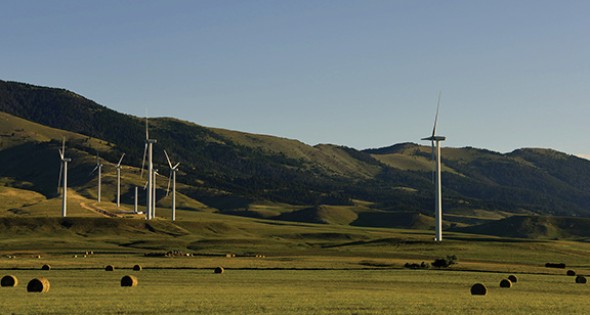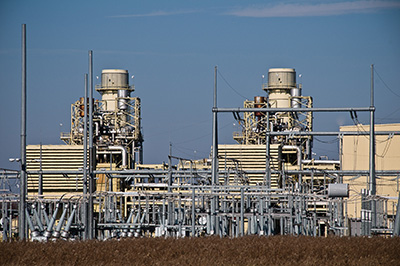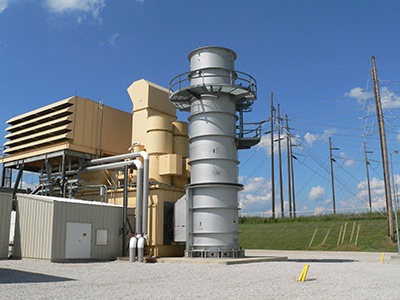
Managing the Mix
21 Nov, 2016
Traditional fossil fuel energy is still powering industry. But renewables, mandated by the U.S. government, have begun to change the paradigm.
There is an energy change underway.
Mandates from the federal government about converting electrical generation sources from fossil fuels like oil, coal and natural gas to other renewable sources such as wind, solar, geothermal and hydropower are causing shifts. It began in 1978, when the Public Utility Regulatory Policies Act of 1978 (PURPA), created in reaction to the oil embargo, encouraged developing a market for new forms of sustainable energy.
Last year produced a new record for global investment in renewable energy. The amount of money committed to renewables excluding large hydro-electric projects rose five percent to $285.9 billion, exceeding the previous record of $278.5 billion in 2011, according to a 2016 U.N. report about global trends.
A renewable energy trends report from The National Renewable Energy Lab found that 24 states increased electricity generation from biomass resources, 23 states from wind electricity production, four states from geothermal electricity production and two states increased electricity generation from large-scale solar electricity production.
Recent legislation, still pending, has been introduced to accelerate the development of smaller hydro power stations. A federal funding bill passed last year extends tax credits for wind and solar energy for an additional five years.
But the demand and usage of coal and natural gas as a source of electricity has remained relatively strong. It is the go-to energy source even where sustainable energy sources are in place, because of the intermittent nature of wind and solar, and the need for a reliable, 24/7 energy source.
Of all renewable sources, solar and wind seem to be catching on fastest. In fact, according to a report from the Clean Energy Technology Center at North Carolina State University sponsored by the U.S. Department of Energy, in the second quarter of 2016, 42 states plus the District of Columbia took a total of 121 legislative actions related to distributed solar policy and rate design.
Offshore and land-based wind energy is predicted to be 113 gigawatts spread over 36 states by 2020 and 224 gigawatts over 47 states by 2030. Studies by the U.S. Department of Energy show that the price of wind energy is projected to be compatible with conventional energy within the next decade.
Wind energy in strong wind states like Texas, Montana and Illinois is predicted to grow substantially over the next decade. For example, sustained winds in Texas, on one day last December, generated enough electricity production to meet a record 45 percent of the state’s total electricity needs for that day, according to a report in Scientific American. That state has more than double the wind generation capacity of any other state in the country, the report found.
Meanwhile, coal is still the largest domestically produced source of energy in the country, with the government now investing in cleaner coal technologies such as carbon capture – where the coal is burned with air in a boiler to produce steam to run turbines – while states continue the process of slowly weaning themselves off of their coal dependence.
Renewables coming into the mix
According to the American Wind Energy Association (AWEA), Iowa generated more than 31 percent of its electricity using wind power in 2015, ranking it first in the nation for wind energy as a share of total electricity. The state generated enough electricity to power the equivalent of more than 1.6 million average U.S. households.
Des Moines-based MidAmerican Energy Company’s recent and current generation growth has been from renewable energy, but fossil fuels are a big part of the energy mix for their customers, according email responses from Debora Blume, director of communications for the company. MidAmerican services 1.5 million electric and natural gas customers in Iowa, Illinois, South Dakota and Nebraska.
In 2004, 70 percent of their generation capacity came from coal. But by the end of this year, the company will own and operate nearly 4,050 megawatts of wind generation capacity, which will be enough to produce the equivalent of 58 percent of the energy that Iowa retail customers use annually, Blume wrote.

Located near Effingham in central Illinois, the Holland Energy Plant is a 630-megawatt natural gas facility that meets Hoosier Energy members intermediate needs when demand is higher average but not approaching peak levels. Courtesy of Hoosier Energy.
Plans for one of their wind generation projects, Wind XI, featuring 1,000 wind turbines, are being finalized now with completion expected in 2019. That wind project, with various sites around the state being operational beginning in 2017, will add 2,000 megawatts of wind-generated power to Iowa. With the completion of that project, the company will have made $10 billion in investments in wind energy projects.
The energy mix at NorthWestern Energy is more sustainable-heavy, according to Rick Edwards, director of key accounts and customer education for NorthWestern. The company provides electricity and natural gas to 700,000 customers in Montana, South Dakota and Nebraska.
Edwards says they are working with 60 percent water and wind for energy as a result of the recent addition of 11 hydroelectric facilities. “We support all of the renewables and all of the efforts that are going on from that perspective,” he says.
There are three different NorthWestern pilot projects in Montana now which relate to renewable energy, each valued at a million dollars.
For example, near Deer Lodge in Butte, NorthWestern is assessing solar and storage microgrids, working with 17 customers in the area; in Missoula, they are focusing more on community solar energy. “These are not trivial projects by any stretch,” Edwards says.
One area of the state that is growing is Big Sky, a 228 square mile area that is 45 miles southwest of Bozeman in southwestern Montana, and home to one of the state’s biggest ski lodges.
Developers are projecting a number of additional lodges and hotels to come, including a 500,000 square foot lodge and living space being constructed now. “We have had to increase our transmission capacity to get to that area, which is basically complete now,” Edwards says.
Even with the renewable sources available at NorthWestern, Edwards says that there is still a lot of coal generation in the state. “One of the challenges with renewables is that they provide only an intermittent source of energy, and not a baseload resource,” he says. “So you can’t necessarily depend on it like some of the base stuff from coal and natural gas.”
When it gets cold in Montana, energy developers found out that renewables provided very little as an energy resource, and had to rely “almost 99 percent” on their baseload generation, Edwards says. “When it’s cold here, there is usually a high pressure system. So the wind is not blowing well. And in the middle of winter, we don’t have a lot of sunlight hours,” he says.
“We support renewable energy, but there has to be a balance,” he says. “Because at the end of the day, people will lean on the grid and the system to make sure that their lights are turned on and their furnace is on. So we need to be prepared for that.”
Accelerating the coal shutdown
In Indiana, Bloomington-based Hoosier Energy has a 1,900 megawatt portfolio that breaks down into 58 percent coal, 37 percent gas and five percent renewable. Hoosier is a generation and transmission cooperative providing wholesale electric power and services to 18 member distribution cooperatives in central and southern Indiana and southeastern Illinois. Hoosier operates coal, natural gas and renewable energy power plants and delivers power through nearly 1,700 miles of transmission network.
One of the big energy industries in Indiana is agriculture, both in the production of crops and in value-added agriculture operations, plus turkey and chicken production facilities. “It runs the full gamut, from field to table,” says Harold Gutzwiller, Hoosier’s manager of key accounts and economic development.
Their coal source has dropped over the last few years, Gutzwiller says, and they are demolishing their original coal plant in Petersburg, which was built in 1970 and closed in 2015. “I don’t know if we anticipate any new gas facilities in the next five years,” he says, adding that the construction of new gas plants is still being allowed, but construction of any coal facilities nationally generally is not. “But we will continue to see growth on the renewables side.”
Hoosier is in the process of building more solar and working to develop landfill (methane) gas with a facility coming online in October.
Another big electricity utility in the Midwest is Ameren Energy, comprised of two primary utilities: Ameren Illinois and Ameren Missouri. The combined company provides electricity for 2.4 million customers and 900,000 gas customers across a 64,000-square-mile area.
The difference between the two is that the company does not own any of the electrical generation supplied to customers in Illinois; in Missouri, they are a fully integrated, regulated utility, the largest electric power provider in the state and the second largest distributor of natural gas.
The company relies on traditional energy sources – coal and gas – with about 12 percent coming from renewable sources. “Our overall rates are about 17 percent below the national average,” Bill Barbieri, director of renewable energy at Ameren, says. “And that is because we have a well-established coal fleet that has been very beneficial for our customers.”
He says they began to work renewables into the energy generation mix in 2011 and plan to increase that mix to 15 percent by 2021. “So as we are trying to move forward, we are integrating and planning to integrate more renewables into our generation,” he says. “As we retire coal units in the future, we want to make that overall transition to renewables in anticipation of the EPA Clean Power Plan (establishes uniform emission rates for fossil fuel power plants) that would require a change in our overall generation portfolio to have less carbon emitting resources,” Barbieri says.
While Ameren is helping facilitate the transition to renewables, they have to be mindful of the needs of their customers. “You have to match up generation with the load” he says. “And in Missouri, solar capacity here is right at about 18 percent. So that means that you will get electrical generation from solar for just 18 percent of the 8,760 hours a year. That is a big gap.”
Working with geothermal as solar surges
Based in Salt Lake City, Utah, Rocky Mountain Power provides electric service to nearly 1.1 million customers in Idaho, Utah and Wyoming. The company is part of PacifiCorp, and combined with the Pacific Power service area (which includes Oregon, Washington and California) they serve 1.8 million customers in a total of six western states.
Rocky Mountain Power services one-third commercial, one-third industrial and one-third residential customers. They have always worked with renewable energy, according to Dave Eskelsen, a spokesperson for the company. “Our involvement goes back a century, with hydroelectric power,” he says. “For a number of years, it was our prime source of electric generation.”
Coal became important as the company grew in the early part of the last century, and now represents two thirds of their energy generation in their base load capacity.
Rocky Mountain Power’s largest customers are industrial operations, such as mining and steelmaking, with agriculture irrigation customers in northern Utah, southeastern Idaho, Oregon and northern California.
In 1984, they constructed a geothermal plant in Utah that was considered “pretty cutting edge” at the time, Eskelsen says. It was expanded in 2005. In addition to taking the live steam that comes from the geothermal field, engineers can also extract heat from the geothermal field using a heat recovery system to generate additional power.
The company began investing in wind power in the late 90s with a 50 megawatt installation in Wyoming, taking advantage of the great wind resources in that state. Today the company has about 1,000 megawatts of wind power that they own and operate, with another 1,000 megawatts purchased under long-term contracts with other suppliers.
Solar has caught on in some of the rural centers of the Rocky Mountain Power service area in Utah and Wyoming, with experimental installations of solar panels for some of their business customers, he says. Customer use of solar panels with net metering applications (where a customer using their own installed renewable energy source sends surplus generated power back to the utility) has grown exponentially in recent years, up from 2,000 solar net metering customers in 2013 to 18,000 today. “So there has been that large addition to our resource mix,” Eskelsen says.
One of the renewable energy programs offered by Rocky Mountain is Blue Sky, a voluntary program that provides a convenient way for customers to support renewable energy beyond the renewable resources included in their basic service mix. When a customer enrolls in Blue Sky, Rocky Mountain Power purchases renewable energy certificates from renewable energy facilities to match the customer’s Blue Sky purchase. This process helps increase demand for renewable energy in the region. Since 2006, Blue Sky customers have also helped fund community-based renewable energy projects in the company’s service area. Many of these projects are now complete, generating electricity and providing educational opportunities.
“There are over 120 community-based solar installations in Utah as a result of the Blue Sky program,” Eskelsen says.

A simple cycle gas combustion turbine at Worthington Generating Station. This 174-megawatt natural gas-fired generating plant in Greene County, Indiana, is used to meet Hoosier Energy member peaking power needs, make off-system sales and satisfy generating reserve requirements. Courtesy of Hoosier Energy.
The company also recently launched its first shared solar program in Utah. Rocky Mountain Power’s subscriber solar program allows customers to subscribe to receive some or all of their electricity from the power of the sun. The program gives customers a choice to use solar even if they cannot afford rooftop solar panels or do not want them on their home. The program will get power from a 20 megawatt solar farm near Holden, Utah, and is at 85 percent reserved as of October 15, 2016.
Eskelsen says that there have been many applications for solar installations constructed by private developers over the last three years, most located in Utah because of their excellent solar profile, and if all of them were eventually constructed, it would amount to more than 3,000 megawatts of solar energy.
Fixing it for the future
As technology developments continue in wind, solar and other sustainable energy sources, and with a close watch on what happens in Washington D.C. from the EPA and the U.S. Department of Energy, power generating facilities have a tricky balancing act to maintain.
They need to respond to customer demand for more and cleaner energy and manage the transition as older fossil fuels are retired. They also have to maintain its usage to supplement intermittent gaps in renewable energy usage and continue to add in renewable sources as a greater percentage of their energy source mix.
Eskelsen says Rocky Mountain Power wants careful work done with their state commissions over the next five years to make sure the pricing for solar generation and use is fair both for customers who use the technology and for those who don’t.
“Solar is here to stay and will play in increasingly important role in how we generate and provide electricity,” Eskelsen says. “We also have an opportunity to make sure that as solar grows, it does so in a cost effective manner and one that is fair to all electricity customers.”
One of the challenges they face at Ameren Energy in Missouri, Barbieri says, is the regulatory construct in which they operate, which is from 1915, as they are dealing with 2015 technology. “It’s like trying to land an F18 in an airport designed by the Wright brothers,” he says. “So we are trying to work with our public service commission and our legislators to revamp our regulatory construct so that the utility will have more flexibility to respond to what our customers want from us in the 21st century.”
Barbieri says some companies are trying to get ahead in the game, declaring they are already 100 percent renewable. “Well, you can theoretically say that you are getting 100 percent renewable energy, but from a practical perspective that is physically impossible, unless they have fully disconnected themselves from the grid, which supports all forms of generation,” he says. “So what we as utilities are trying to do is figure out how can we best balance all of these things and encourage and engage more sustainable generation,” he says.
Sidebar
Eastern Idaho going (mini) nuclear
Idaho has been a renewable energy state for years, drawing energy from wind, solar, biomass, geothermal and hydro. “In recent years, wind and solar has really started to surge ahead in the renewables area,” Jan Rogers, CEO of regional economic development for eastern Idaho, says.
But the biggest thing on the horizon, she says, is a small marginal nuclear reactor (SMR) – essentially a small, 76-foot tall by 15-foot diameter modular nuclear fission reactor power plant useful in areas where access to other power sources is more difficult. It’s scalable as well, with up to 12 modules able to be monitored and operated from a single control room.
In August, the Utah Associated Municipal Power Systems (UAMPS) announced the building of an SMR, to be constructed by Oregon-based NuScale Power, on a 35-acre site at the 890-square-mile Department of Energy’s Idaho National Laboratory in eastern Idaho. “It’s the first of its kind, and will be built in stages,” Rogers says.
The development could go on until 2025, she says, but for now the UAMPS is going through the process of getting it organized. “From a developer’s perspective, it’s one of the largest construction opportunities in this region that this state has seen in many years,” Rogers says.
She says they expect more manufacturing opportunities to come to the area as a result of the power available from the project, in addition to the influx of approximately 1,000 construction jobs and the increase of supply chain companies coming in during the construction period. “It will make nuclear once again a great opportunity in the energy mix,” Rogers says.
The region’s two universities are working together to develop a training facility for workers. “We want to develop a training or technology center adjacent to the plant as well,” she says.
Related Posts
-

Pinellas County, Florida Celebrates Ribbon Cutting of the ARK Innovation Center Business Incubator
-

Time To “Pivot, Stretch, And Adapt”
-

More Efficient Agriculture Techniques are Coming into the Focus
-

Logistics Getting on a Quicker, more Focused Track
-

Opportunity Zones and Post-COVID-19 Economic Recovery
-

New Ideas Emerge for Both Sustainable and Fossil Fuel Technologies
-

New Goals and New Internet Tech Help Build Base for Advanced Manufacturing
-

Business Services Today Focus on Human Resources, Data Analytics
-

Ready to Shift into High Gear
-

The New Forestry Momentum










